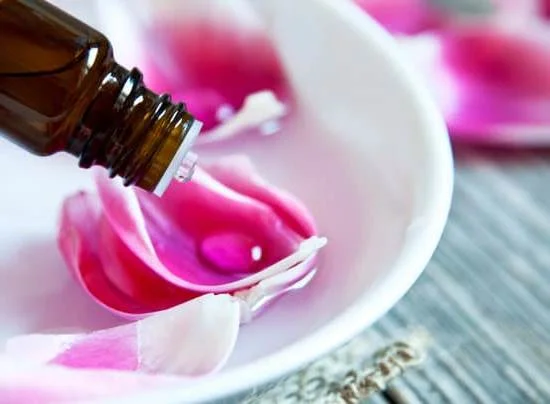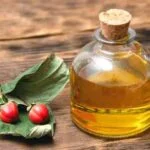Massage therapy has gained immense popularity in recent years as people seek natural ways to relax, reduce stress, and promote overall well-being. With a plethora of massage techniques available, it can be overwhelming to choose the right option for your specific needs.
Two commonly sought-after types of massages are Swedish massage and aromatherapy massage. While both offer relaxation and therapeutic effects, understanding the differences between these two approaches can help you make an informed decision about which one is best suited for you.
Swedish massage is considered the foundation of Western massage and focuses on releasing muscle tension through long, gliding strokes, kneading, and gentle tapping. It aims to promote relaxation, increase blood flow, improve flexibility, and reduce stress.
Aromatherapy massage, on the other hand, combines traditional massage techniques with the use of essential oils extracted from plants to enhance the therapeutic effects of the session. These aromatic oils not only provide physical benefits but also have a powerful impact on our senses and emotions.
In this article, we will delve into the key distinctions between Swedish and aromatherapy massage to help you understand which approach aligns better with your individual preferences and desired outcomes. We will explore their techniques and movements, as well as how they incorporate essential oils or fragrance into their sessions.
Additionally, we will discuss the focus areas for each type of massage therapy and their specific benefits for holistic well-being. By analyzing customization options along with important considerations such as contraindications or precautions associated with each type of massage, we aim to empower you to make an informed choice when selecting a massage therapy that caters to your unique needs.
Understanding the Basics
Swedish massage and aromatherapy massage are two popular types of massage therapy that offer a range of physical and mental benefits. Understanding the basics of these techniques is crucial in determining which type of massage is most suitable for an individual’s needs and preferences.
Defining Swedish Massage
Swedish massage, also known as classic massage, is the most common and widely practiced form of massage therapy. It involves using long strokes, kneading, deep circular movements, vibration, and tapping to release tension from muscles and promote relaxation. The primary goal of Swedish massage is to improve circulation, reduce muscle tension, increase flexibility, and promote overall well-being.
The technique used in Swedish massage focuses on the superficial layers of muscles and aims to relax the entire body. It typically begins with the client lying face down on a padded table while the therapist massages the back, legs, arms, and neck. Then the client turns over so that the therapist can work on the front side of the body.
Defining Aromatherapy Massage
Aromatherapy massage combines traditional massage techniques with specially selected essential oils derived from plants. These essential oils are believed to have various therapeutic properties that enhance both physical and emotional well-being. During an aromatherapy massage session, a therapist applies diluted essential oils directly onto the skin or uses a diffuser to disperse their aroma throughout the room.
The use of essential oils adds an additional element to the massage experience by stimulating not only touch but also smell. Different scents can evoke different emotions and moods in individuals. For example, lavender oil is often used for its calming effects, while citrus oils like lemon or orange can provide an uplifting sensation.
Technique and Movements
Swedish massage is known for its specific techniques and movements that target different areas of the body. The primary goal of Swedish massage is to relax the entire body by applying pressure to various muscles and rubbing them in the direction of blood flow towards the heart. This section will highlight the characteristic techniques used in Swedish massage.
One key technique used in Swedish massage is effleurage, which involves long, gliding strokes that help warm up the muscle tissue and increase blood flow. Effleurage is typically performed using the palms of the hands or the fingertips, and it is often used at the beginning and end of a massage session.
Another commonly used technique in Swedish massage is petrissage, which involves kneading or squeezing the muscles. This technique helps release tension and improve flexibility by targeting deeper layers of muscle tissue. Petrissage can be done using different parts of the hand, such as the knuckles or thumbs, depending on the client’s needs.
Friction is another technique used in Swedish massage, where steady pressure is applied using circular or transverse movements with the fingertips or thumbs. This technique helps increase circulation and break down scar tissue or adhesions within the muscles.
Tapotement, or percussion, is a rhythmic tapping movement performed with cupped hands, fingers, or with a closed fist. This technique provides an invigorating sensation and can help stimulate nerves and loosen up tight muscles.
By combining these different techniques, a skilled therapist can customize a Swedish massage session based on each individual’s needs. These techniques not only promote relaxation but also have specific physiological benefits such as reducing muscle tension, improving circulation, and increasing range of motion.
Essential Oils
Aromatherapy massage is a popular form of massage therapy that combines the healing power of touch with the therapeutic properties of essential oils. Essential oils are highly concentrated plant extracts that are known for their various health benefits and can be used for physical, mental, and emotional well-being. During an aromatherapy massage, these oils are added to the massage oil or lotion and applied directly to the skin through gentle strokes, kneading, or long gliding motions.
The use of essential oils in aromatherapy massage offers many potential benefits. Different oils have different properties, such as lavender oil being known for its calming and relaxation effects, while eucalyptus oil is often used for its decongestant and anti-inflammatory properties. These oils can help alleviate stress and anxiety, reduce muscle tension and inflammation, boost circulation, improve sleep quality, and enhance overall mood and well-being.
It is important to note that not all essential oils are suitable for everyone as some individuals may have allergies or sensitivities to certain scents or ingredients. It is always recommended to consult with a qualified aromatherapist before undergoing an aromatherapy massage to ensure that the chosen essential oil blend is safe and appropriate for your specific needs.
| Essential Oil | Main Therapeutic Properties |
|---|---|
| Lavender | Calming, relaxing, stress relief |
| Eucalyptus | Decongestant, anti-inflammatory |
| Peppermint | Energizing, pain relief, headache relief |
| Chamomile | Soothing, sleep aid |
The Focus and Benefits
Swedish massage, also known as classic massage, is one of the most popular types of massage therapy. The primary focus of Swedish massage is to promote relaxation and relieve muscle tension and stress. It uses a combination of long, flowing strokes, kneading, and deep circular motions to target specific areas of the body.
One of the key benefits of Swedish massage is its ability to improve blood circulation. The gentle pressure applied during the massage helps to stimulate the flow of oxygenated blood to the muscles, which in turn promotes healing and reduces muscle stiffness.
In addition to improving circulation, Swedish massage also has several other therapeutic effects on the body. It can help reduce pain and inflammation by releasing endorphins, which are natural painkillers produced by the body. The relaxation response triggered during a Swedish massage also helps lower blood pressure and heart rate, promoting overall well-being.
Muscle Relaxation and Flexibility
Another important focus of Swedish massage is muscle relaxation and flexibility. The various techniques used in this type of massage help to stretch and elongate muscles, reducing tension and improving range of motion. By targeting specific muscle groups, it can help relieve pain from overworked or tight muscles caused by repetitive movements or prolonged sitting.
Mental Health Benefits
In addition to its physical benefits, Swedish massage also has positive effects on mental health. The relaxation induced by this type of massage can reduce anxiety and depression by calming the nervous system and promoting a sense of well-being. It can also improve sleep quality and relieve insomnia symptoms.
Overall, Swedish massage provides a holistic approach to wellness by addressing both physical and mental health concerns. Its focus on relaxation, improved circulation, muscle flexibility, and mental well-being make it an ideal choice for individuals looking for a well-rounded therapeutic experience.
Fragrance and Aromatherapy
Aromatherapy is an integral part of the massage experience, particularly in aromatherapy massage. This section will analyze the impact of aromatherapy on the senses and emotions, highlighting the benefits it provides during a massage session.
The use of aromatic substances, such as essential oils, plays a significant role in aromatherapy massage. These natural oils are extracted from various plants and possess distinct fragrances that can evoke different emotional responses. When these oils are combined with the therapist’s skilled techniques during a massage, they can create a synergistic effect that enhances relaxation and overall well-being.
The olfactory system, responsible for our sense of smell, has a direct link to the brain’s limbic system, which controls emotions and memories. The unique scents emitted by essential oils can trigger specific reactions in the brain, influencing mood and promoting relaxation. For example, lavender oil is known for its calming properties and can help alleviate stress and anxiety. On the other hand, citrus oils like lemon or orange can provide an energizing and uplifting effect.
Aside from their impact on emotions, essential oils used in aromatherapy massages can also have physical benefits. Some oils possess certain therapeutic properties that can address specific concerns or conditions. For instance, eucalyptus oil is commonly used for its decongestant properties when someone is experiencing respiratory issues like allergies or colds.
| Benefits | Description |
|---|---|
| Emotional Relaxation | The unique scents emitted by essential oils can trigger specific reactions in the brain, influencing mood and promoting relaxation. |
| Physical Therapeutic Effects | Some essential oils possess therapeutic properties that can address specific concerns or conditions, such as decongestant properties for respiratory issues. |
Customization and Personal Touch
When it comes to customization and personalization, both Swedish and aromatherapy massage offer unique experiences tailored to individual needs and preferences. However, there are some key differences in terms of the degree of customization between these two types of massage therapy.
Swedish Massage: A Versatile and Customizable Option
Swedish massage is known for its versatility and adaptability, making it a highly customizable option for clients. Therapists trained in Swedish massage techniques have a wide range of movements and techniques at their disposal, allowing them to tailor the treatment based on the client’s specific concerns or goals.
During a Swedish massage, therapists can adjust the pressure applied, speed of strokes, and the specific areas of focus based on client preferences. For example, if a client has deep-seated muscle tension in their shoulders and neck, the therapist can use targeted techniques to address those areas. Conversely, if a client prefers lighter pressure or has sensitive areas that need extra care, the therapist can modify their approach accordingly.
Aromatherapy Massage: Personalizing with Essential Oils
Aromatherapy massage takes customization to another level by incorporating essential oils into the treatment. Essential oils are highly concentrated plant extracts known for their therapeutic properties. During an aromatherapy massage session, essential oils are carefully selected and mixed with carrier oil before being applied to the skin through various massage techniques.
The choice of essential oils used in aromatherapy massage can be customized according to each client’s individual needs and preferences. Different oils have different effects on the body and mind – lavender promotes relaxation, peppermint soothes sore muscles, eucalyptus improves respiratory function – allowing therapists to create personalized blends depending on the desired outcome. This thoughtful incorporation of scents adds an additional layer of personalization that enhances both physical and emotional well-being.
While both Swedish and aromatherapy massages can be tailored to suit individual needs, the degree of customization may vary. Swedish massage offers more versatility when it comes to adjusting pressure and targeting specific areas of the body, while aromatherapy massage allows for personalization through the careful selection of essential oils. Ultimately, the choice between these two types of massage therapy depends on personal preferences and desired outcomes.
Special Considerations
Before receiving any type of massage therapy, it is important to consider any potential contraindications or precautions that may apply. Both Swedish and aromatherapy massage have their own specific considerations that individuals should be aware of before undergoing treatment.
In general, Swedish massage is considered safe for most people. However, there are certain conditions where caution should be exercised or the treatment may need to be modified. Individuals with certain medical conditions such as high blood pressure, diabetes, osteoporosis, or arthritis should inform their therapist beforehand. Additionally, pregnant women should consult with their healthcare provider before receiving a Swedish massage as special considerations may need to be made.
Aromatherapy massage also has its own set of precautions and contraindications. The use of essential oils during the treatment can sometimes cause allergic reactions in individuals who are sensitive to certain scents or ingredients. It is important to inform the therapist if you have any known allergies or sensitivities. Furthermore, individuals with respiratory conditions such as asthma or chronic obstructive pulmonary disease (COPD) may need to avoid certain essential oils that could trigger symptoms.
In both types of massage, individuals who have recently had surgery or are recovering from an injury should consult with their healthcare provider before receiving treatment. In some cases, the act of massaging injured areas can interfere with the healing process or exacerbate existing conditions.
Overall, it is crucial to communicate openly with your therapist about any medical conditions, allergies, or concerns you may have prior to receiving either Swedish or aromatherapy massage. By doing so, the therapist can tailor the treatment accordingly and ensure a safe and effective experience for you.
Choosing the Right Option
Choosing the right massage therapy is crucial in achieving the desired therapeutic benefits and addressing individual needs and preferences. When deciding between Swedish massage and aromatherapy massage, it is important to understand the differences in order to make an informed decision.
For individuals seeking a relaxing and rejuvenating experience, Swedish massage might be the ideal choice. This type of massage focuses on long, sweeping strokes along with kneading and friction techniques. It aims to promote relaxation, increase circulation, and alleviate muscle tension. Swedish massage is beneficial for those looking to reduce stress, improve flexibility, and enhance overall well-being.
On the other hand, aromatherapy massage combines the power of touch with the use of essential oils to provide a deeply therapeutic experience. Essential oils derived from plants are carefully selected based on their specific properties and are then mixed with carrier oils for application during the massage. The combination of touch and fragrance creates a holistic approach to healing, targeting both physical ailments and emotional well-being.
When choosing between Swedish massage and aromatherapy massage, it is important to consider personal preferences and goals. If you prefer a classic technique that focuses primarily on physical relaxation, Swedish massage may be more suitable for you. However, if you are looking for a multi-dimensional approach that targets your senses and emotions as well as your body’s needs, aromatherapy massage may provide a more comprehensive experience.
Ultimately, selecting the most appropriate massage therapy comes down to individual preferences and goals. It is always recommended to consult with a professional therapist who can assess your needs and guide you towards the most suitable option for achieving optimal holistic well-being.
Conclusion
In conclusion, Swedish and aromatherapy massage are two distinct types of massage therapy that offer unique benefits for holistic well-being. Swedish massage focuses on overall relaxation, improving circulation, and relieving muscle tension through its characteristic techniques such as effleurage and kneading. On the other hand, aromatherapy massage incorporates the use of essential oils to enhance the therapeutic effects and stimulate the senses and emotions.
While both types of massage therapy provide numerous benefits, they differ in their approach and focus. Swedish massage is ideal for individuals seeking general relaxation, stress relief, or relief from muscular aches and pains. The techniques used in Swedish massage can improve flexibility, increase the flow of oxygen in the blood, and promote an overall sense of well-being.
Aromatherapy massage, on the other hand, offers not only physical but also emotional benefits. By incorporating essential oils with various scents known for their healing properties, this therapy can address specific concerns such as anxiety, depression or insomnia while providing relaxation at the same time. The aromatic molecules released during an aromatherapy session have a profound impact on our limbic system – triggering certain emotions or memories and promoting a state of deep relaxation.
Ultimately, choosing between Swedish and aromatherapy massage depends on individual needs and preferences. For those seeking purely physical relaxation or pain relief, Swedish massage may be the better choice.
However, if you are looking to address specific emotional concerns while enjoying physical relaxation, then aromatherapy massage with its tailored essential oils would be more suitable. Whichever option you choose, both Swedish and aromatherapy massages have proven to be effective methods for promoting overall well-being – making them valuable treatments to incorporate into your self-care routine.
Frequently Asked Questions
Which is better Swedish massage or aromatherapy?
The question of whether Swedish massage or aromatherapy is better ultimately depends on individual preferences and needs. Swedish massage is a traditional style of massage that focuses on relaxing muscles and improving circulation through various techniques such as long strokes, kneading, and tapping. It can be particularly beneficial for reducing muscle tension, improving flexibility, and promoting overall relaxation.
On the other hand, aromatherapy massage incorporates the use of essential oils during the massage to enhance relaxation and address specific concerns such as stress, fatigue, or pain. The soothing scents of the oils can have a positive impact on mood and emotions. Ultimately, it comes down to personal preference and the desired outcome – whether you prioritize muscle relaxation or additional emotional benefits.
What is an aromatherapy massage?
An aromatherapy massage combines the therapeutic benefits of massage with the use of aromatic essential oils derived from plants. During this type of massage, a trained therapist would blend essential oils based on an individual’s specific needs and preferences. These oils are then applied to the body through various techniques like gentle strokes or inhalation.
The purpose behind incorporating aromatherapy into a massage session is to enhance relaxation, relieve stress or certain ailments using natural scents that stimulate our olfactory senses. Different essential oils have distinct qualities – some may promote relaxation while others may invigorate or uplift one’s mood.
What is the most effective type of massage?
Determining the most effective type of massage varies depending on an individual’s specific goals or conditions they are looking to address. There are numerous types of massages available each catering to different needs ranging from pain relief to stress reduction or overall well-being enhancement.
For instance, deep tissue massages focus on releasing chronic muscle tension by targeting deeper layers; sports massages assist in athletic recovery; Shiatsu massages utilize acupressure points; and Thai massages incorporate stretching techniques for improved flexibility among many others.

Are you looking for a natural way to improve your health and wellbeing?
If so, aromatherapy may be the answer for you.





